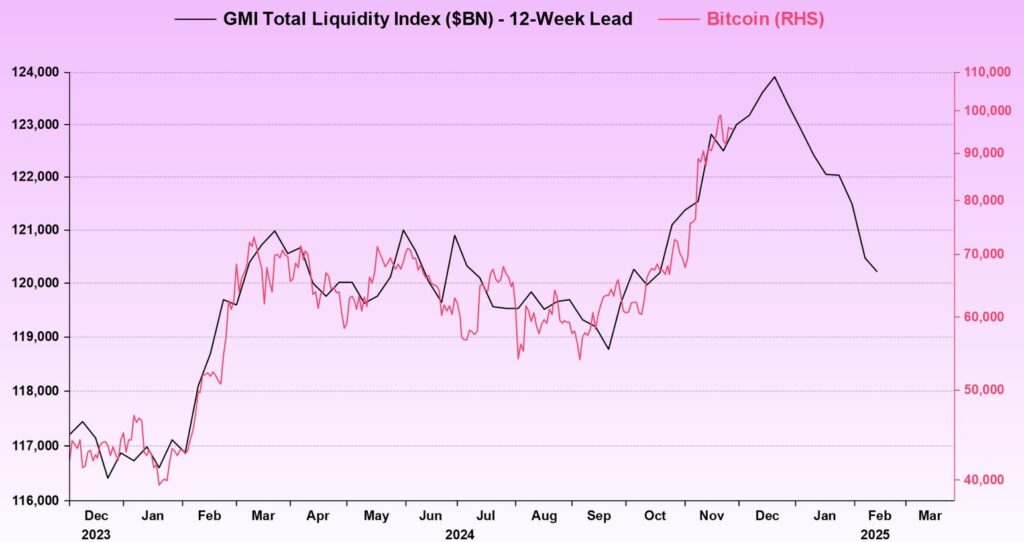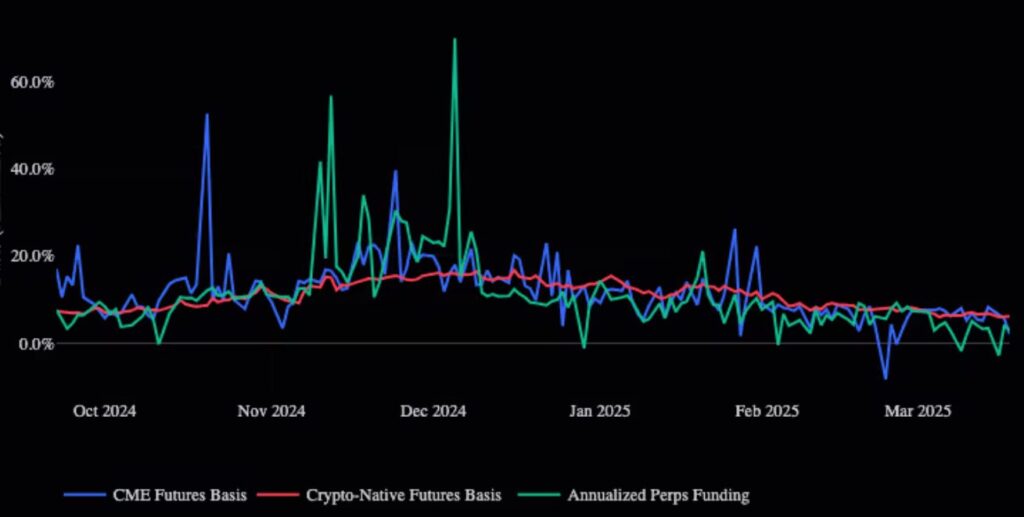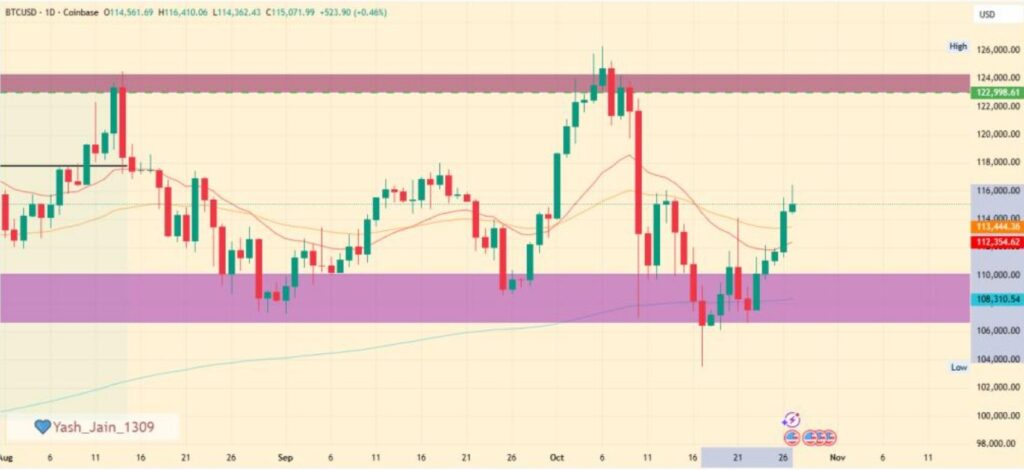
Main Points :
- The recent drop in Bitcoin (BTC) from its highs is being attributed by Arthur Hayes to a contraction in US dollar liquidity, rather than purely geopolitical factors.
- Hayes’ proprietary US-dollar liquidity index reportedly fell around 10 % since early April 2025, even as Bitcoin initially rose ~12 % during the same period—a divergence Hayes sees as unsustainable.
- Institutional influxes via spot Bitcoin ETFs and purchases by Digital Asset Treasury (DAT) companies masked the underlying liquidity stress, but as those flows slow or reverse, Bitcoin is now exposed to macro pressure.
- In the short term, Hayes projects potential further downside for Bitcoin (possibly down toward US $80,000–85,000) while in the longer run he remains bullish (targeting US $200,000–250,000 by year-end) if liquidity conditions reverse.
- For blockchain practitioners and crypto asset hunters, this means the broad macro backdrop (dollar liquidity, central-bank balance sheets, ETF flows) is re-emerging as a dominant driver of crypto price action — and not just token-specific fundamentals.
1. Background: Why liquidity matters to crypto

At its core, the argument is that Bitcoin behaves like one of the most liquid risk assets in the world — and thus is highly responsive to changes in the supply of the US dollar and global fiat liquidity. Hayes puts it bluntly: “Bitcoin is the free-market weathervane of global fiat liquidity.”
When dollar liquidity is abundant, global investors tend to allocate more capital into risk assets, including crypto. Conversely, when liquidity tightens, assets like Bitcoin can feel outsized downward pressure. Recent patterns suggest the latter is in play now.
In early 2025, many observers focused on technicals and token-specific narratives (ETF flows, adoption stories). But Hayes argues that those “internal” flows were masking an underlying macro imbalance — namely the contraction in dollar liquidity.
For practitioners in blockchain or new crypto assets, the takeaway is clear: besides chain metrics, tokenomics, network growth, and DeFi fundamentals, macro-liquidity flows matter. If the dollar liquidity backdrop turns negative, even strong fundamentals may struggle.
2. What went wrong: The anatomy of the recent drop

According to Hayes, here is the sequence of events that led to Bitcoin’s ~25 % pullback from its all-time high since October:
- The US government shutdown (1 October–4 November) caused a temporary halt in short-term Treasury (T-bill) issuance, but more importantly raised pressures in the short-term funding markets — increasing demand for cash.
- Simultaneously, the Federal Reserve’s quantitative tightening (QT) reduced banks’ reserve balances by roughly US $300 billion between September and mid-November, pushing reserves below the US $3 trillion mark. This directly reduced liquidity.
- At the same time there was large Treasury auction settlement, quarter-end / monthly options expiry and corporate tax payments — all drawing cash from the system. To top it off, approximately US $1.9 billion in crypto leverage liquidations (especially in Bitcoin markets) increased demand for USD-based liquidity.
- The bank‐repo markets tightened: the repo rate jumped, signalling that banks were hoarding cash rather than lending it, and thus the “cash-grab” phenomenon occurred.
- Meanwhile, institutional flows that had been supporting Bitcoin started to decline:
- Spot Bitcoin ETF inflows gave the impression of institutional conviction, but Hayes points out many flows were actually arbitrage trades (buy ETF, short futures) rather than long-term “we believe in Bitcoin” allocations.
- Digital Asset Treasury (DAT) companies also slowed Bitcoin purchases because their stocks traded at discounts to net asset value (mNAV), making further accumulation uneconomic.
- Without those inflows hiding the damage, the contraction in USD liquidity became visible in Bitcoin’s decline. Hayes concludes: “Bitcoin must fall to reflect the current short-term worry that dollar liquidity will contract or not grow as fast as the politicians promised.”
In summary: the drop wasn’t purely a crypto-narrative event (token hack, regulation shock etc.) — but a macro funding event. For blockchain teams or alt-coin investors this matters: when macro liquidity is contracting, even strong projects may struggle in valuation despite fundamentals.
3. Short-term outlook: What to watch for

Hayes gives several conditional scenarios to watch in the near term:
- He warns that if risk assets broadly retreat (e.g., US equities down 10–20 %) and the 10-year US Treasury yield reaches ~5 %, the pressure on liquidity would intensify. He sees the potential for Bitcoin to fall into the US $80,000–85,000 range under those conditions.
- At the same time, Hayes expects liquidity injection mechanisms to kick in: he projects that the Fed’s balance sheet will grow again (via implicit or “stealth” quantitative easing) and that the Treasury may ramp up money creation. When such dollar liquidity returns, Bitcoin’s next leg up could follow.
From a practical standpoint, if you are evaluating new crypto assets or building blockchain infrastructure, now might be a time of consolidation rather than new highs. Projects should consider that the macro environment may suppress valuations despite good fundamentals. But if you anticipate the liquidity turn correctly, positioning ahead of that event could yield strong upside.
4. Longer-term thesis: Why Hayes remains bullish

Despite the short-term risks, Hayes retains a bullish long-term cycle thesis:
- He argues that once the macro money printing resumes (either via Fed balance sheet expansion or Treasury issuance or other liquidity mechanisms), Bitcoin is poised to benefit. He sees $200,000–$250,000 as plausible by year-end if the turn happens.
- He draws a parallel to past cycles: after a liquidity squeeze and a risk-asset shakeout, governments eventually inject liquidity to stabilize the system, which often triggers a powerful rally in risk assets. For Bitcoin this could be the launch point of the next major bull-phase.
- For crypto strategists and practitioners, the implication is: align with the macro-liquidity cycle. If you are working on a protocol or token that will materially benefit from broader adoption when risk-on returns, this could be your build-phase. If you are an investor searching for the next asset opportunity, you might look to early entrants before liquidity revives rather than late-cycle hype.
In short: while the immediate backdrop is caution-centric, the broader macro thesis for crypto — particularly Bitcoin and other high-quality digital assets — remains constructive.
5. Implications for new crypto assets and blockchain use-cases
For the audience of this article — those seeking new crypto assets, income opportunities, and practical blockchain applications — here are some actionable implications:
- Asset selection matters: In a liquidity contraction environment, projects with strong fundamentals, clear use-cases, hybrid finance or revenue models stand a better chance of weathering the downturn. Speculative or hype-driven tokens may suffer disproportionately.
- Timing the cycle: If you believe the macro-liquidity turn is upcoming, entering early into meaningful protocols (staking, DeFi, infrastructure) ahead of the capital inflow phase may deliver outsized returns. Conversely, launching or marketing new tokens during the squeeze requires extra discipline and clear value-creation.
- Treasury strategy for protocol teams: As Hayes pointed out, DAT companies slowed accumulation when their stock traded at a discount to NAV. Similarly, protocol treasuries should consider how liquidity conditions impact token issuance, buybacks, partnerships and ecosystem growth — don’t assume bullish valuations will persist without macro backing.
- Focus on blockchain utility: Liquidity may drive price, but utility drives sustainability. In an upcoming cycle where liquidity returns, protocols that deliver real-world value (payments, stablecoins, asset-backed tokens, trustless infrastructure) will likely outperform purely financialised tokens.
- Risk management: Even bullish investors should respect the short-term downside risk. If the macro scenario worsens (further liquidity drain, policy mis-steps, risk-asset contagion), crypto assets may correct before the next leg up. Ensure strategies are resilient to both contraction and expansion phases.
Conclusion
The analysis by Arthur Hayes offers a compelling macro-lens through which to interpret the recent Bitcoin decline and forecast the next phase of crypto markets. The narrative is not simply “Bitcoin dropped for no reason”; rather, it is a confluence of dollar-liquidity contraction, institutional flow unwind, and macro funding stress which exposed the market’s vulnerability.
For readers looking for new crypto assets, income opportunities, and blockchain applications, the current period may represent a strategic build-or-entry window — provided you align with both macro (liquidity) and micro (fundamentals) dynamics. If liquidity recovers as Hayes expects, the next leg could favour projects and tokens poised for adoption and real-world utility. Until then, the market may dig through a consolidation or correction phase.

